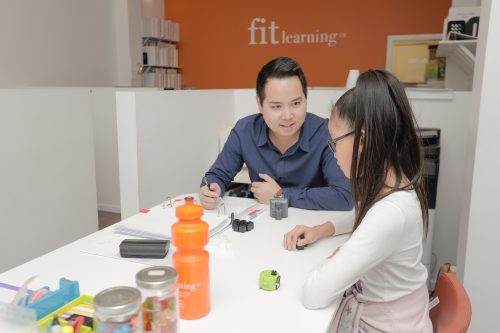Fit Learning has been operating for more than 25 years, commencing in the Behaviour Analysis Department of the University of Nevada, and now operating throughout the world, with 2 clinics in Perth – Claremont and Cottesloe. Our full story is set out at https://fitlearners.com/our-story/
We work with children of a variety of presentations, and in particular children with complex, severe and challenging behaviours, including children with a diagnosis of an autism spectrum disorder.
In particular, we work with children that present with challenging learning problems that are unable to benefit from other interventions due to their self-stimulatory behaviours, or behaviours that have developed as a result of delays in communication and language, and behaviours that interfere with learning. While other programs may label these children as having attentional problems, Fit Learning will identify missing “learning to learn” skills that are essential for a child to benefit from learning.
Many parents that end up at Fit Learning’s doors, are overcome with relief that an organisation that uses evidence based methodologies, knows how to assess and diagnosis why their children have made little or limited progress in other programs. Many parents recount the significant investment of time and money to no avail, of a multitude of interventions that not only did not make any improvement in their child’s learning, but actually resulted in developing behaviours to escape unpleasant or difficult therapies that were beyond their reach. Often the children were blamed for their lack of attention or their difficult behaviours, rather than being assessed for skills that were missing to benefit from therapy.
For the most part, these children do not have the “learning to learn” skills that are essential to enable them to attend to a teacher, make sustained eye contact, engage and attend for sufficient time and remain attentive to benefit from therapy – such as sitting and working without touching materials, remaining in the teaching environment without attempting to leave, staying focussed without being distracted by noises or other children, being able to wait to access preferred items such as ipads and food, and refrain from engaging in vocal or gross motor stereotypy for periods of time that allow a therapist implementing programs with them to get sufficient practice of the teaching skills.
In particular, Fit Learning uses fluency based instruction that allows children repeated practice of skills until such time as those skills are easily, effortless and become embedded in more complex skills. Mastery of skills is based on fluent performance which draws upon behavioural and neuroscience that informs us that long term potentiation in the brain is obtained by deliberate and repeated practice under high rates of reinforcement. This is a critical component for children with learning delays that need sufficient practice to master a skill and be able to use it outside of therapy.
With an underpinning of behavioural science, Fit Learning draws upon Applied Behaviour Analysis, now used for more than 40 years in the field of autism, and established as the most effective intervention for teaching children with significant and challenging behaviours – with its primary goal being to identify the most critical skills that a child needs for being successful, to enjoy a fully engaged life, inclusive of family and society activities.
We incorporate strategies as recommended by Jacqueline M. A. Roberts Griffith University & Katrina Williams University of Melbourne, the Royal Children’s Hospital & Murdoch Children’s Research Institute, and as outlined in their report prepared for the NDIS – https://www.ndis.gov.au/about-us/publications including:
- Functional Behaviour Assessment;
- Functional Communication Training;
- Antecedent-based interventions;
- Behavioural interventions;
- Cognitive behavioural interventions incorporating Acceptance and Commitment Therapy (Mindfulness);
- Naturalistic Interventions or Natural Environment Training;
- Picture exchange communication systems ;
- Pivotal response training;
- Response Interruption/Redirection;
- Story-based Interventions;
- Social skills training;
- Task analysis;
- Video-modelling, and
- Visual supports.
Fluency based instruction, a method drawn from Behavioural Science, is a critical component of our program that has produced significant outcomes for the learners we have worked for for more than 2 decades.
Every program is individualised to the student’s needs and implemented by highly trained and skilled Behaviour Analysts.
We use precise and scientific, evidence based methodologies and strategies, combined with intensive parent training, to ensure the interventions are family focused, and that generalisation of skills and behavioural repertories transfer from our clinic to the home and the natural learning environment.
Our intensive enrollments for children with autism are for a minimum of 20 hours per week and in most cases, enrollments are for a full calendar year. Programs incorporate behavioural intervention to teach attention, learning to learn skills, language, speech and articulation, play skills, social skills, self care, eating and sleeping interventions, independent activity schedules combined with parent training to ensure skills are used in the environments they are used in.
Further information regarding our program is set out at http://fitlearning.com.au/school-aged-programs/fit-homeschool/


